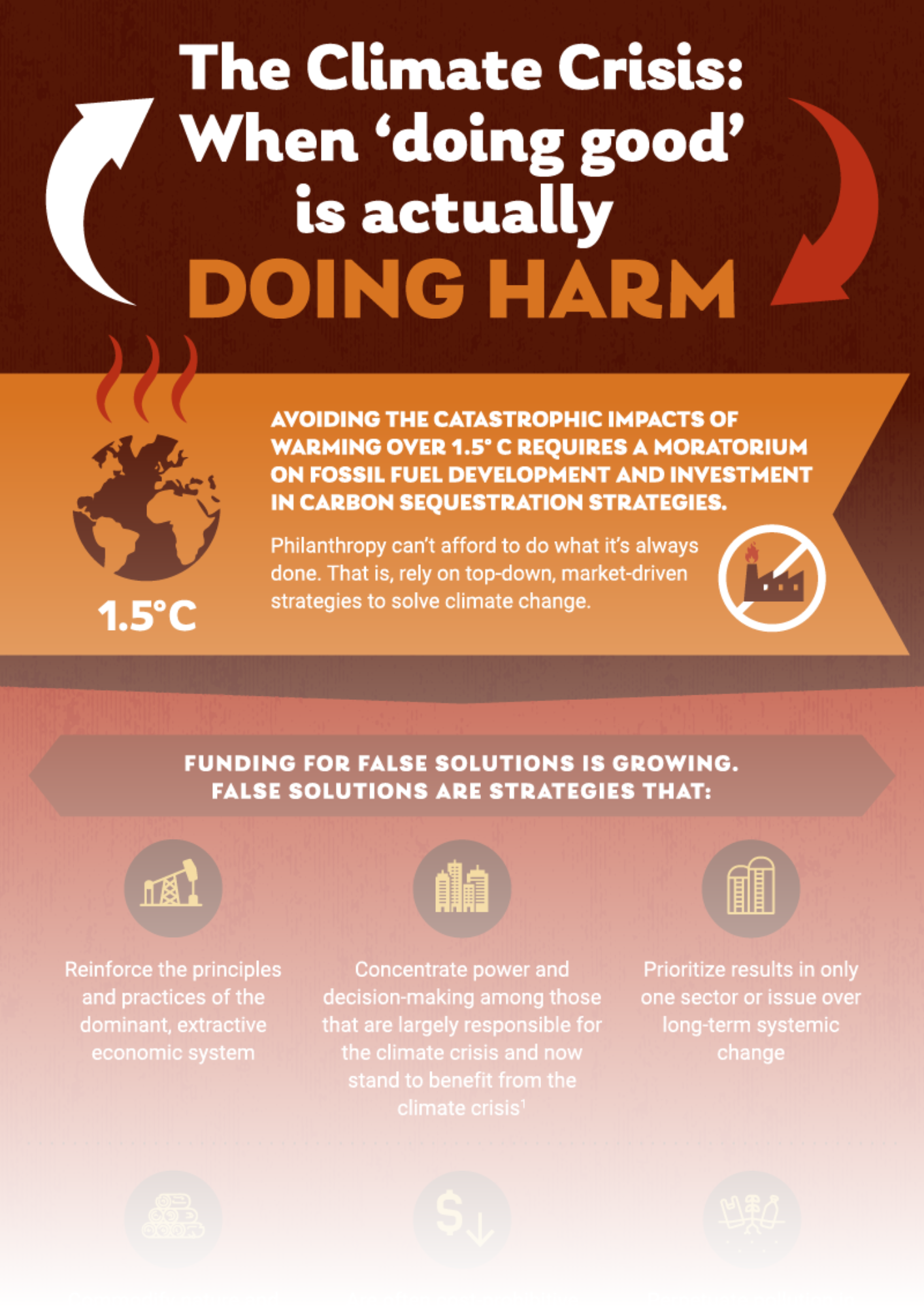
Grassroots movements have sophisticated approaches for growth, which ensure sustainable, resilient, and equitable solutions. By expanding our view of scale, funders can better understand and resource strategies that are likely to succeed, in the long run, at cooling the planet while advancing equity.
Locally-tailored climate justice solutions scale to generate global shifts by solving multiple problems simultaneously, with robust coordination throughout their local networks. How do funders match the scale of grassroots movement-building with bold & effective philanthropy? Watch this short video on Reimagining Scale to learn more.

Grassroots organizing has been a central strategy of almost every major social and economic transformation in world history—from ending apartheid to the recognition of Indigenous rights to women’s suffrage globally.
Yet, the term ‘grassroots’ gets thrown around loosely and it is beginning to become watered down (but not in a way that supports grassroots). Defining and understanding this term will help funders and others in civil society in supporting grassroots change, and creating our own structures of accountability.

With a global pandemic and the ever-looming climate crisis, where can our philanthropic dollars make a difference? In the last two years, grassroots movements have shown how to meet the immediate needs of communities when governments are failing to, and organize for long-term change in a moment that shows how desperately we need it. To resource grassroots movements, funding intermediaries play a critical role, as depicted in this infographic unpacking our learnings.
Working with a trusted intermediary means you are moving money now to grassroots groups advancing pivotal action on climate. You are drawing from the deep relationships and expertise that intermediary has in accompanying movements, in ways that do not co-opt or compromise their efforts. And you avoid overburdening grassroots organizations that have movements to build, rather than funder relationships to manage. Lastly, you are investing in an intermediary who, due to proximity with change-makers, is likely to be working creatively to shift power within philanthropy towards impacted communities from whom that same wealth has been extracted.

There is a common belief in the philanthropic sector that doing something is better than doing nothing. But what happens when some funders’ efforts to do good end up doing more harm, undercutting effective climate action? This infographic explores these false promises.
Top-down, market-based strategies maintain the extractive economic system, perpetuate the exploitation of frontline communities, and distract from meaningful action to address the climate crisis. Projects such as the industrial “green revolution” and airline carbon offsets often lack community ownership and accountability and do not cut emissions at source. Instead may end up harming frontline communities.
Funders have an unprecedented opportunity at this moment. A different promise can be made. One which addresses the underlying drivers of the climate crisis, builds power, and elevates collective leadership.